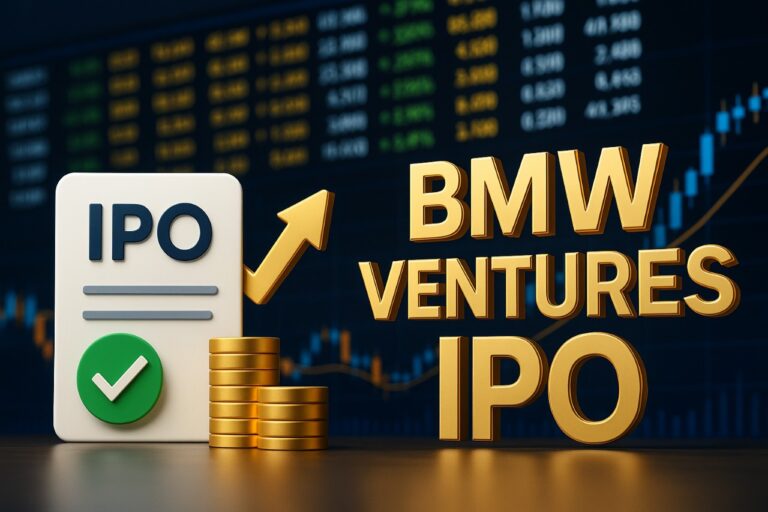Rick Perry’s Fermi Data Center REIT Eyes $13 Billion IPO in the U.S
The race to dominate AI infrastructure has created a new kind of gold rush. Every company, from cloud giants like Microsoft and Google to startups building AI models, is desperate for data center capacity. These facilities aren’t just warehouses of servers anymore—they are the backbone of artificial intelligence, cloud computing, and digital finance.
In the middle of this boom, a bold new player has entered the scene: Fermi, a data center Real Estate Investment Trust (REIT) co-founded by Rick Perry, former U.S. Energy Secretary. Within just months of its launch, Fermi has stunned Wall Street by filing for an IPO that could give it a valuation of up to $13.16 billion.
What makes this IPO even more interesting is that Fermi is not a traditional REIT. Its flagship project, Matador, combines massive land holdings with its own energy generation system—a hybrid of nuclear, natural gas, and solar. This could be a game-changer in an industry where power supply is often the biggest bottleneck.
But is Fermi’s IPO really the next big opportunity, or is it an overhyped bet in a crowded market? Let’s break it down.
Fermi – A New Breed of Data Center REIT
Fermi isn’t playing by the old rules. Unlike established REITs such as Equinix or Digital Realty, which lease data centers and rely on external utilities, Fermi is building a model where real estate + power generation + data infrastructure all come under one roof.
Key IPO Details
-
IPO Size: 25 million shares
-
Price Range: $18–$22 per share
-
Capital Raise: ~$550 million
-
Target Valuation: $13.16 billion
This valuation puts Fermi in the same league as global leaders—despite being brand-new. That’s why analysts are watching this IPO so closely.
Project Matador – The Bold Texas Bet
| Feature | Details |
|---|---|
| Location | Amarillo, Texas |
| Land Size | ~5,236 acres |
| Energy Sources | Nuclear + Natural Gas + Solar |
| Target Capacity (2026) | 1 GW |
| Future Goal (2038) | 11 GW |
Project Matador is not just another data center campus—it’s designed to be self-sufficient in energy. That means Fermi could sidestep the biggest challenge in the industry: securing cheap and reliable electricity for high-density AI workloads.
If executed correctly, this could make Fermi a cost leader in the U.S. data center space.
How Fermi Stacks Up Against Competitors
Fermi is not entering an empty market. Giants like Equinix and Digital Realty have dominated the REIT space for years. But Fermi’s energy-first model could set it apart.
| Company | Current Valuation | Business Model | Energy Integration |
|---|---|---|---|
| Equinix | ~$80B | Global data center leasing | Dependent on external utilities |
| Digital Realty | ~$35B | Data center REIT with global reach | Limited integration |
| Fermi (IPO target) | ~$13B | Energy-integrated REIT with Project Matador | Full integration (nuclear, gas, solar) |
Unlike its rivals, Fermi isn’t just building server farms; it’s building power plants + real estate + data hubs all at once. That’s both its biggest strength and its riskiest gamble.
The Hidden Opportunities
-
AI Explosion – With generative AI models requiring 10–100x more computing power, demand for large-scale data centers is only growing.
-
Energy Control – By generating its own power, Fermi could avoid grid shortages and reduce long-term costs.
-
Strategic Location – Texas offers cheap land, favorable policies, and abundant sunlight for renewable energy.
The Risks Nobody is Talking About
-
Unproven Revenue Model – Fermi has little to no revenue today. Its future depends on execution.
-
Nuclear Complexity – Incorporating nuclear energy means regulatory hurdles and long approval cycles.
-
Market Timing – If tech valuations cool off, a $13B IPO could look overstretched.
-
Execution Pressure – Missing timelines for Project Matador could damage investor trust.
Conclusion – A $13 Billion Gamble
Fermi’s IPO is a high-risk, high-reward play. On one hand, it has the potential to reinvent how data center REITs operate by merging energy with infrastructure. On the other hand, it’s still early-stage with heavy execution risks.
For investors, this is a classic moonshot opportunity. If Fermi delivers, early shareholders could ride one of the biggest infrastructure growth stories of the decade. But if it stumbles, its ambitious $13 billion dream could collapse before it even takes off.







